23 Authentic Turkish Breakfasts to Start Your Day Right
Turkish breakfasts represent a vibrant culinary experience that transforms morning meals into luxurious social gatherings.
Families and friends gather around sprawling tables filled with colorful ingredients and delectable spreads.
Each region contributes unique flavors and traditional preparations that celebrate local ingredients and cultural heritage.
The morning ritual goes beyond mere eating, becoming a celebration of connection and shared moments.
Stunning arrays of cheeses, olives, breads, and multiple small dishes create a feast for both eyes and palate.
Regional variations showcase the incredible diversity of Turkish cuisine, highlighting local produce and time-honored cooking techniques.
Breakfast becomes an art form that reflects hospitality, warmth, and community spirit.
These 23 signature Turkish breakfast experiences will tantalize your senses and transport you to a world of culinary delight:
Signature Turkish Breakfasts to Start the Day Right
Turkish breakfasts are an abundant spread of cheeses, breads, olives, and fresh vegetables, served with strong tea. The morning table is a celebration of flavors, textures, and hospitality.
Kahvalt
Turkish kahvalt is a luxurious breakfast feast celebrating culinary diversity through an elaborate spread of flavors and textures.
Originating from Ottoman traditions where coffee followed meals, kahvalt translates literally as "before coffee" and represents a cultural morning ritual connecting family and friends.
Rich displays include multiple cheese varieties, fresh olives, crisp vegetables, warm breads, soft eggs, savory borek pastries, and sweet baklava complemented by steaming Turkish tea.
Regional ingredients showcase local agricultural bounty with each carefully selected item telling a story of Turkish culinary heritage.
Ingredients vary by region, reflecting local agricultural specialties and seasonal produce.
Each plate combines sweet and savory elements in harmonious balance.
Sharing becomes a central social experience during this leisurely morning gathering.
Conversations flow as freely as the tea while everyone samples multiple dishes.
Katmer
Katmer is a sublime sweet borek originating from Gaziantep, Turkiye's culinary heartland, featuring layers of thin pastry generously filled with crushed pistachios, clotted cream, and sugar.
Gaziantep bakers craft this delicate breakfast pastry with remarkable skill, stretching dough paper-thin and layering it with rich local ingredients.
Newlyweds traditionally enjoy katmer as their first shared meal, symbolizing sweet marital beginnings.
Pistachios from the region provide a distinctive nutty crunch that elevates this morning delicacy.
Local bakeries open early to serve fresh katmer, making it a beloved morning staple.
Southeastern Anatolian cuisine celebrates this treat as a testament to its rich culinary heritage.
Generations have perfected the technique of creating katmer's delicate, flaky texture.
Visitors to Gaziantep consider tasting katmer an essential gastronomic experience.
Mercimek Corbas
Mercimek corbas are hearty red lentil soups originating from Turkey, featuring a smooth, rich texture that warms stomachs and comforts souls across Anatolian regions.
Red lentils simmer with chicken stock, creating a golden-orange broth infused with aromatic spices like cumin and paprika.
Home cooks and restaurant chefs carefully blend onions and carrots into the soup, enhancing its depth and nutritional value.
Restaurants and families serve this dish throughout Turkey as a satisfying meal during breakfast, lunch, or dinner.
Small local eateries called lokantas frequently feature mercimek corbas on their daily menus.
Simple ingredients and quick preparation make this soup a staple in Turkish households.
Nutritious and filling, mercimek corbas provide essential proteins and warmth during cold seasons.
Regional variations exist, with some cooks adding mint, lemon juice, or additional spices for extra flavor.
Pide
Sfiha represents a savory Arabic meat pie originating in 15th-century Lebanon, featuring minced lamb, chopped onions, tomatoes, and signature spices atop open-faced dough.
Immigrants introduced this delicious specialty to Brazil and Argentina, where it quickly became a popular street food.
Arab regions embrace sfiha as a traditional snack served hot with tahini sauce or yogurt.
Pomegranate seeds and coriander often garnish the dish, adding fresh flavor and color.
Ground lamb mixed with spices originally came wrapped in brined grape leaves before evolving to its current form.
Mediterranean influences shine through its simple yet robust ingredients.
Olive oil enhances the meat's rich taste, creating a satisfying meal.
Brazilian and Argentinian communities continue celebrating this flavorful Arabic tradition.
Bal Kaymak
Bal kaymak is a luxurious Turkish breakfast delicacy featuring rich, thick buffalo milk cream generously drizzled with golden honey.
Water buffalo milk creates an exceptionally smooth and dense cream with a distinctive silky texture that sets this dish apart from other dairy spreads.
Traditional preparation involves carefully skimming cream from slowly heated milk, allowing it to develop an intense, buttery flavor profile.
Locals typically serve bal kaymak alongside warm bread, creating a perfect sweet and creamy combination.
Walnuts occasionally garnish the dish, adding a subtle crunch and nutty undertone.
Breakfast tables across Turkey celebrate this simple yet elegant morning treat.
Restaurants and home kitchens alike take pride in preparing this classic dish with meticulous care.
Regional variations can include different honey types or additional nut selections, reflecting local culinary traditions.
Borek
Borek are flaky, multilayered pastries originating from Turkey with a rich culinary heritage tracing back to the Ottoman Empire.
Bakers create these savory or sweet treats by wrapping delicate fillings inside thin yufka dough, carefully brushing each layer with butter before baking.
Historians link borek's origins to ancient Byzantine recipes from 160 BC, specifically an early cheese-filled layered bread called en tyritas plakountas.
Turkish regions boast numerous variations, including meat, cheese, spinach, and potato fillings that reflect local ingredient preferences.
Yufka dough, handmade from simple flour, water, and salt, provides a more substantial texture compared to phyllo pastry.
Regional differences showcase borek's adaptability across Mediterranean and Middle Eastern cuisines.
Restaurants and home kitchens prepare these pastries as popular breakfast, lunch, or snack options.
Gozleme
Gozleme are traditional Turkish stuffed flatbreads renowned for their versatile fillings and crispy exterior, prepared by stretching thin dough and folding it around savory ingredients like spiced meats, vegetables, cheeses, and eggs.
Originating as a humble breakfast or light meal, these flatbreads have transformed into popular street food across Turkey.
Skilled cooks roll the dough paper-thin before carefully spreading chosen ingredients and sealing the edges.
Baked on a large griddle called a sac, gozleme develop a golden-brown crisp surface while maintaining a soft interior.
Wheat flour, water, yeast, olive oil, and yogurt form the foundational dough mixture, ensuring flexibility and preventing brittleness.
Regional variations showcase unique local ingredients and cooking techniques.
Restaurants, food carts, and cafes throughout Turkey now offer these satisfying flatbreads as quick, delicious meals.
Travelers and locals alike enjoy gozleme as a convenient and flavorful dining option.
Menemen
Menemen is a vibrant Turkish breakfast dish loaded with scrambled eggs, tomatoes, and green peppers simmered together in a rich, spicy sauce that defines traditional Turkish morning cuisine.
Home cooks across Turkey prepare this one-pan meal with regional variations including optional ingredients like sausage, cheese, or spinach.
Restaurants typically serve menemen in sizzling metal pans alongside baskets of fresh bread for scooping up the flavorful mixture.
Families often enjoy this protein-packed dish as a quick and satisfying morning meal.
Most diners skip utensils and instead use bread to scoop up the soft, slightly spicy egg spread.
Regional recipes differ slightly based on local ingredients and personal preferences.
Some versions include garlic or onions for extra depth of flavor.
Turkish breakfast tables come alive with this simple yet incredibly tasty egg dish that connects generations through its comforting flavors.
Beyran Corbas
Beyran corbası is a fiery Turkish breakfast soup from Gaziantep known for its intense spiciness and unique morning meal status.
Regional chefs craft this bold dish by slowly rendering lamb fat and layering it with tender shredded lamb meat and rice.
Hot lamb broth infused with garlic and pepper paste creates a deep, warming flavor profile that awakens the senses.
Locals consume this soup early in the day as a hearty protein-rich meal designed to provide energy and warmth.
Pepper paste gives the soup its signature heat, making it a challenging but beloved regional specialty.
Lemon wedges and fresh Turkish bread often accompany the soup, allowing diners to adjust the tangy and spicy balance.
Gaziantep restaurants and home kitchens pride themselves on preparing this traditional morning soup with precision and care.
Each bowl represents generations of culinary tradition deeply rooted in southeastern Turkish cuisine.
Incir Uyutmas
Incir uyutmas are a traditional Turkish dessert featuring figs soaked overnight in warm milk, creating a uniquely soft and creamy breakfast or sweet treat.
Regional goat herders first developed this dish in northeastern Anatolia as a simple, nourishing snack centuries ago.
Home cooks prepare the pudding by steeping figs in milk and allowing them to rest until morning, transforming the ingredients into a smooth, comforting delicacy.
Molasses and chopped walnuts traditionally garnish the dish, adding rich sweetness and nutty crunch.
Modern Turkish families enjoy incir uyutmas both as a morning meal and an after-dinner dessert.
Milk softens the figs, creating a tender texture that melts in your mouth.
Regional variations exist across different parts of Turkey, reflecting local ingredient availability.
Each serving connects you to generations of Turkish culinary tradition through its simple yet profound preparation method.
Ramazan Pidesi
Ramazan pidesi is a sacred Turkish bread deeply connected to Ramadan's spiritual traditions, featuring a distinctive round shape with intricate crisscross patterns pressed into its surface.
Bakers carefully craft this soft, warm bread using high-quality flour, water, milk, yeast, sugar, and salt, often enriching the dough with butter or olive oil.
Muslims eagerly anticipate this bread during Ramadan, breaking their daily fast with its comforting texture and rich flavor.
Families gather around tables, sharing this bread as a symbol of community and religious devotion.
Skilled bakers create each loaf with precision, ensuring a golden-brown exterior and soft interior.
Turkish bakeries prepare massive quantities of this bread throughout the holy month, making it a staple of Ramadan celebrations.
Regional variations exist, with some bakers adding unique touches to their recipes.
Fresh from the oven, Ramazan pidesi connects generations through its time-honored preparation and deep cultural significance.
Kuymak
Kuymak is a hearty Turkish mountain dish featuring melted cornmeal blended with stringy aged cheeses like trabzon or kashar.
Mountainous regions of Turkey's Black Sea coast traditionally prepare this rich comfort food using coarsely-ground cornmeal as its base.
Grated cheese transforms the hot cornmeal into a stretchy, creamy mixture that becomes incredibly smooth when mixed.
Butter or kaymak (Turkish clotted cream) frequently enhances the dish's luxurious texture and flavor.
Shepherds and rural families have long enjoyed kuymak as a warming meal during cold mountain winters.
Regional variations exist across northeastern Turkey, with each area adding its unique cheese and preparation style.
Ingredients are simple yet carefully selected for maximum taste and consistency.
Regional restaurants and home kitchens continue to serve this traditional speciality with pride and expertise.
Tepsi Boregi
Tepsi boregi is a beloved Turkish pastry featuring layered phyllo dough baked to golden, crispy perfection with rich savory fillings.
Originating in Turkey, this versatile dish combines thin pastry sheets with seasoned ground meat, potatoes, spinach, or cheese.
Melted butter brushed between each delicate layer creates a flaky, tender texture that melts in your mouth.
Home cooks and restaurants across Turkey prepare tepsi boregi as a satisfying main course or appetizer.
Traditional recipes often include ground lamb or beef mixed with onions for extra flavor.
Bakers can cook this pastry in an oven or on a stovetop, carefully flipping to ensure even browning.
Family gatherings and special occasions frequently feature this comforting, hearty dish.
Regional variations showcase different fillings and cooking techniques, making tepsi boregi a versatile staple of Turkish cuisine.
Kaygana
Kaygana is a rustic Turkish egg dish that transforms simple ingredients into a crispy, golden breakfast staple with deep regional roots.
Originating from Anatolian kitchens, this versatile recipe blends eggs, flour, salt, and milk into a smooth batter that fries to a delicate, lacy texture in butter.
Turkish families prepare kaygana in countless regional styles, with some versions adding herbs, cheese, or meat for extra flavor.
Rural communities often serve it as a quick morning meal or light lunch, reflecting its peasant cooking heritage.
Street vendors and home cooks alike treasure this adaptable dish for its simplicity and satisfying taste.
Breakfast tables across Turkey frequently feature kaygana as a beloved comfort food.
Generations have passed down recipes that highlight local ingredients and cooking techniques.
Small variations in preparation make each kaygana unique to its specific region or family tradition.
Zeytin Piyazi
Zeytin piyazi is a zesty Turkish olive salad bursting with Mediterranean flavors and simplicity.
Green olives form the salad's bold core, complemented by diced tomatoes and sharp scallions that add crisp texture.
Chopped parsley introduces a fresh herbal note while lemon juice provides bright acidity.
Red chili flakes spark subtle heat across the dish's landscape.
Thyme contributes an earthy undertone that deepens the salad's rustic profile.
Olive oil binds all ingredients, creating a smooth, unified dressing.
Served as a side or appetizer, this salad represents Turkey's love for fresh, uncomplicated ingredients.
Minimal preparation transforms basic components into a vibrant culinary experience.
Yumurtal Pide
Yumurtal pide is a savory Turkish flatbread originating from Kayseri, Middle Anatolia, featuring a perfectly cracked egg atop a crisp, golden base.
Rich with melted cheese, diced tomatoes, and spicy peppers, this traditional bread often includes pastrma, a thin, spice-coated dry-cured beef as an optional topping.
Bakers carefully craft the soft, oval-shaped dough with precise techniques passed through generations.
Each pide emerges from wood-fired ovens with a crisp exterior and tender interior.
Skilled artisans crack eggs directly onto the bread just minutes before completing baking.
Restaurants and street vendors across Turkey serve this hearty dish as a popular breakfast or light meal.
Regional variations showcase different ingredient combinations and cooking methods.
Kayseri remains the most famous area for producing authentic yumurtal pide.
Gul Boregi
Gul boregi are exquisite Turkish pastries shaped like delicate roses, crafted from thin yufka or phyllo dough.
Traditional fillings include spinach, white cheese, potatoes, or ground meat that create rich flavor profiles inside the spiraled dough.
Bakers carefully roll the stuffed dough into distinctive circular shapes resembling blooming flowers.
Professional Turkish bakeries and home kitchens prepare these pastries as popular breakfast or snack items.
Regional variations allow creative cooks to experiment with different ingredients and filling combinations.
Each gul boregi is individually sized for convenient eating.
Gentle baking transforms the pastry into a golden-brown delicacy with crispy exterior and soft interior.
Mediterranean cuisine celebrates these beautiful spiral pastries as a beloved culinary treasure.
Cilbir
Cilbir represents a luxurious Turkish egg dish featuring poached eggs nestled atop garlicky yogurt and drizzled with spicy red pepper butter.
Sultan Abdul Hamid II famously enjoyed this specific preparation during Ottoman imperial times.
Traditional preparation involves carefully poaching fresh eggs until their yolks remain perfectly runny.
Smooth yogurt serves as a creamy base mixed with crushed garlic and subtle salt.
Melted butter infused with smoky red pepper flakes provides a dramatic finishing touch.
Home cooks across Turkey serve cilbir as a popular breakfast or brunch option.
Mediterranean ingredients create a rich, complex flavor profile.
Bread or flatbread typically accompanies this satisfying meal.
Kavut
Kavut is a hearty Turkish porridge blending roasted whole-meal wheat and barley grains ground traditionally by stone milling.
Mountain villagers in Trabzon prepare this warm grain dish by carefully roasting and grinding grains into a smooth mixture.
Local families cook kavut by combining the ground grains with milk, creating a thick porridge-like consistency.
Butter and sugar enhance the base flavors, creating a rich texture.
Cooks create a distinctive well in the center of the porridge, filling it with honey or light sugar syrup.
Sweet butter drizzled inside adds extra richness to each spoonful.
Traditional preparation methods highlight regional agricultural practices.
Generations have enjoyed this simple yet satisfying breakfast or dessert throughout eastern Turkiye.
Ciger Kebab
Ciger kebab represents southeastern Turkey's bold street food tradition, featuring skewered liver grilled to perfection with intense regional flavor variations.
Originating in cities like Diyarbakr, Gaziantep, and Sanlurfa, this dish showcases unique preparation methods across southern provinces.
Skilled cooks cube or slice lamb liver and season it with salt and spices before carefully threading it onto skewers, often alternating with tail fat.
Ottoman cookbooks document this culinary practice dating back centuries, describing traditional seasoning techniques using garlic, vinegar, and salt.
Roasted green peppers and tomatoes frequently accompany the sizzling skewers, enhancing the meal's visual and flavor profile.
Gaziantep prepares the liver in distinct cubed styles, while Mersin and Adana have their own skewering techniques.
Breakfast or street food settings welcome this protein-rich delicacy, making it a staple in Turkish cuisine.
Boyoz
Boyoz represents a savory pastry originating from Izmir, Turkey, with deep historical roots tracing back to Sephardic Jewish immigrants from Spain during the late 15th century.
Spanish culinary traditions merged with Turkish baking techniques to create this unique pastry characterized by its flaky, layered texture and rich flavor profile.
Crafted exclusively in Izmir, boyoz requires a precise combination of flour, sunflower oil, and tahini, which are carefully worked into thin, delicate layers.
Local bakers skillfully stretch and fold the dough to achieve its signature crispy exterior and soft interior.
Traditional preparation involves baking the pastry in special wood-fired ovens that enhance its distinctive taste and texture.
Street vendors and bakeries continue to preserve this centuries-old recipe, ensuring its cultural significance remains alive.
Zeytin Salatas
Zeytin salatas are rustic olive salads from Hatay that showcase Turkey's rich culinary heritage through a unique preparation method involving hand-cracking indigenous green olives in traditional copper bowls.
Locals carefully select premium olives and gently crush them to release natural flavors and textures.
Drizzled with high-quality olive oil and tangy pomegranate syrup, this simple yet elegant dish offers a perfect balance of savory and sweet notes.
Turkish families often serve zeytin salatas as a refreshing breakfast accompaniment or a light appetizer before main meals.
Each bite delivers a burst of authentic regional taste that connects you directly to Hatay's agricultural traditions.
Regional olive varieties contribute distinctive richness and complexity to the salad's overall profile.
Minimal ingredients highlight the pure, fresh quality of Turkish olives.
Regional olive groves provide the essential foundation for this beloved Mediterranean-style dish.
Murtuga
Murtuga stands as a rustic Libyan breakfast staple featuring a rich blend of butter, flour, and eggs transformed into a creamy, golden scramble.
Originating from North African culinary traditions, this dish delivers a nutty, comforting flavor profile through its simple cooking method.
Libyans prepare murtuga by melting butter in a pan and carefully toasting flour until it reaches a golden hue.
Eggs are then incorporated, creating a smooth, hearty mixture that clings together with a distinctive texture.
Traditional preparation involves constant stirring to prevent burning and ensure even cooking.
Regional variations might include additional spices or herbs for extra depth.
Home cooks often serve murtuga with fresh bread or alongside other morning dishes.
Families typically enjoy this warm, satisfying meal as a quick and nourishing start to their day.
What Is a Typical Turkish Breakfast Made Of?
A traditional Turkish breakfast, or kahvaltı, is a vibrant and abundant spread that combines a variety of fresh, flavorful items designed to be enjoyed leisurely:How Does Turkish Breakfast Reflect the Country’s Culture?
Turkish breakfast is more than just a meal, it’s a social ritual embodying hospitality, community, and a deep appreciation for fresh, wholesome food:
Turkish breakfast is a delicious expression of cultural warmth, diversity, and connection.

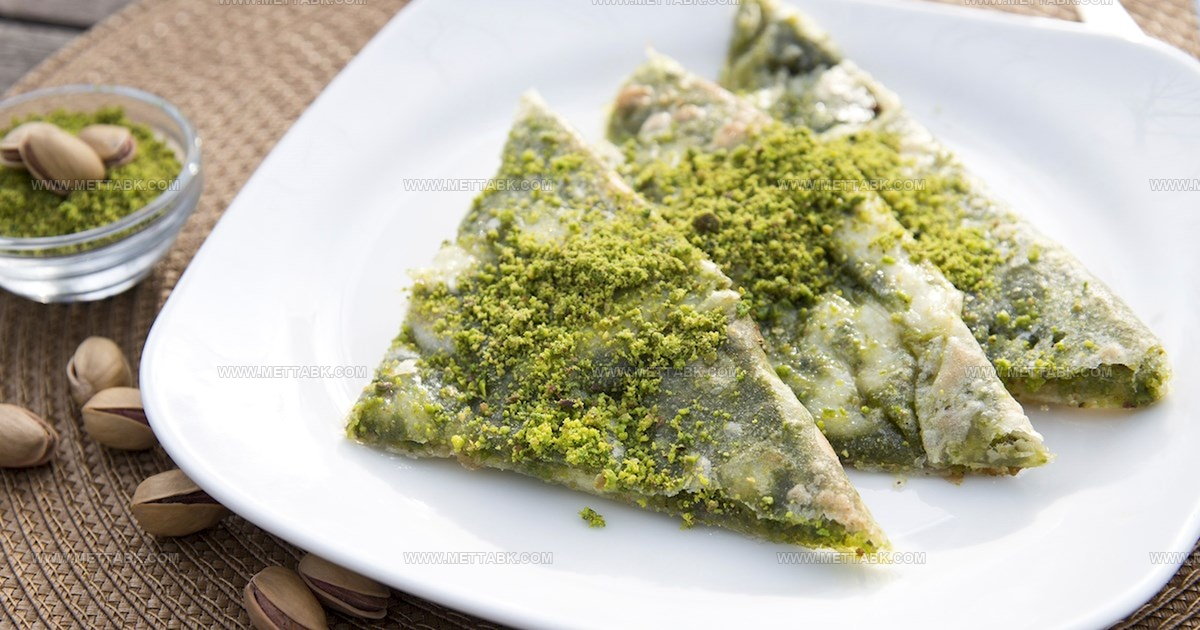

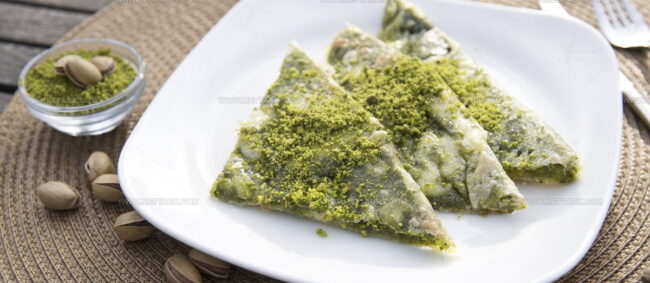



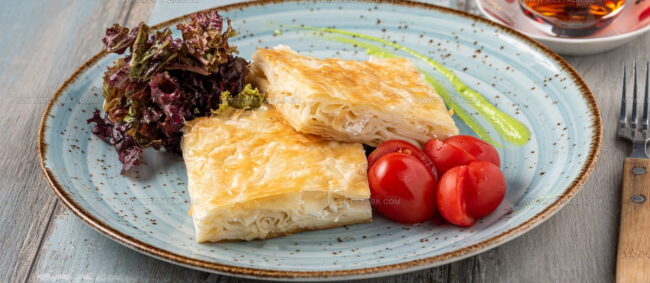
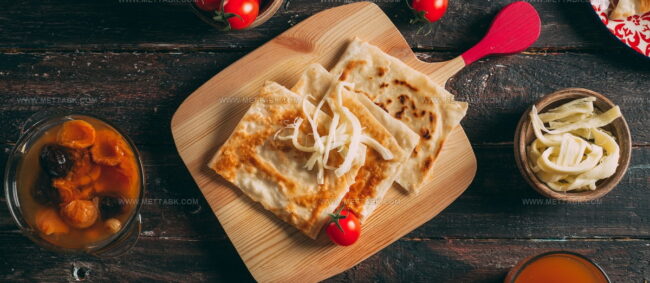


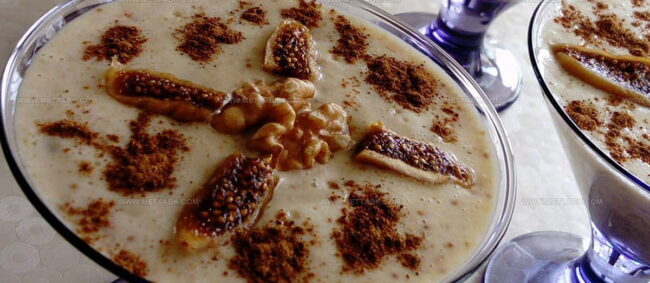
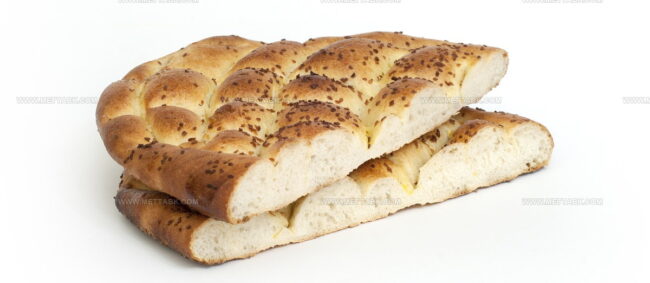
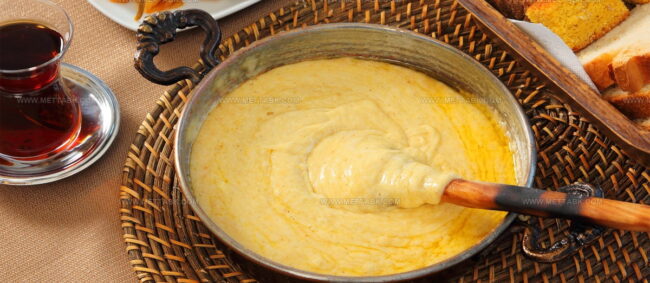

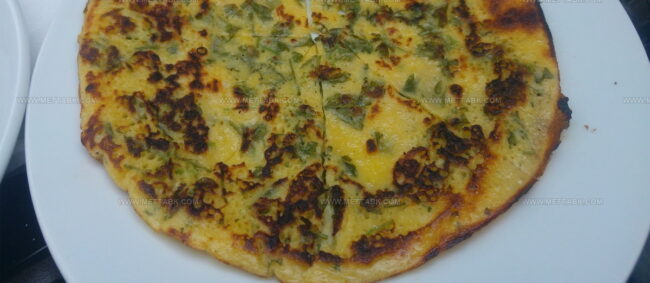
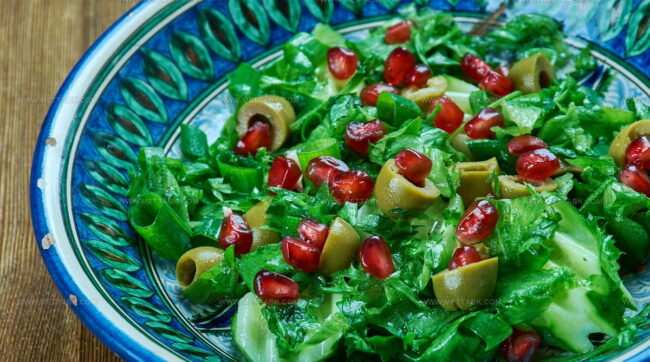

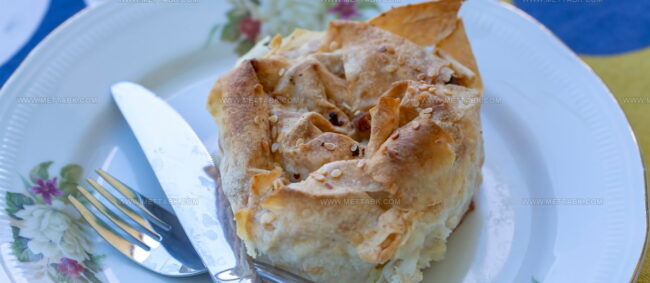
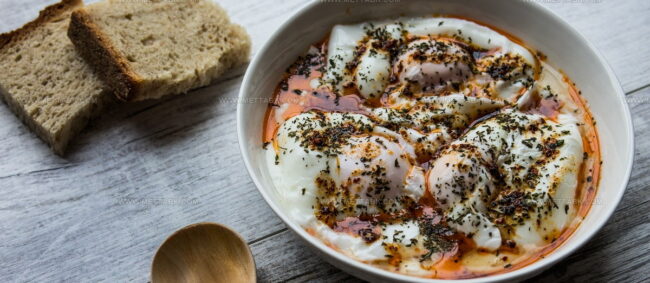

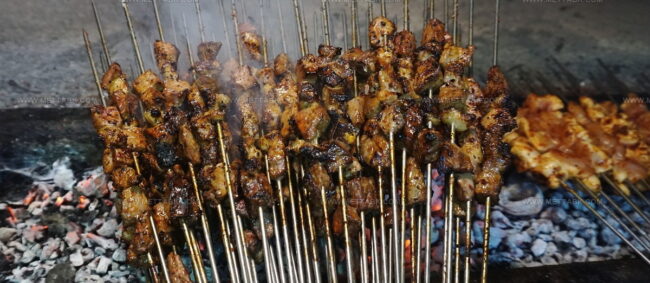

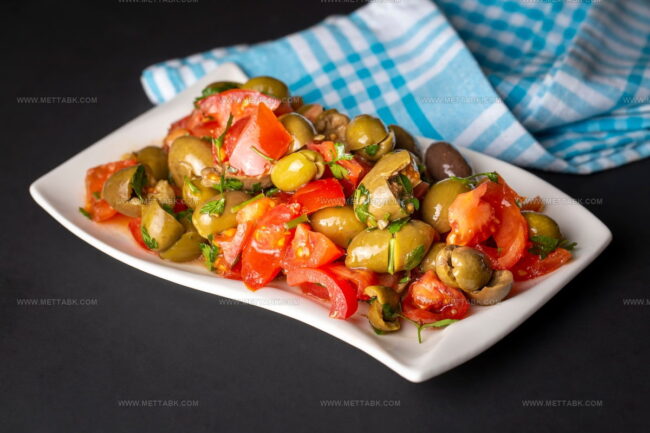
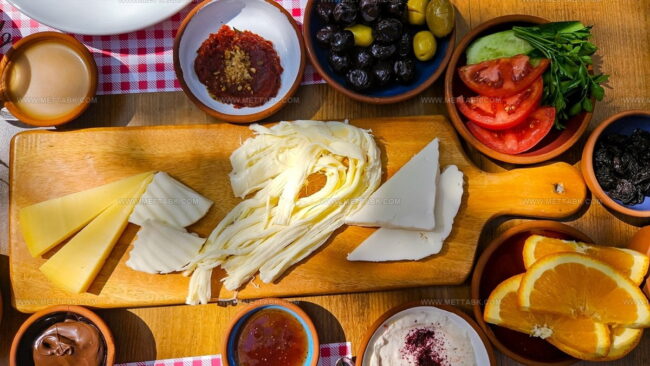
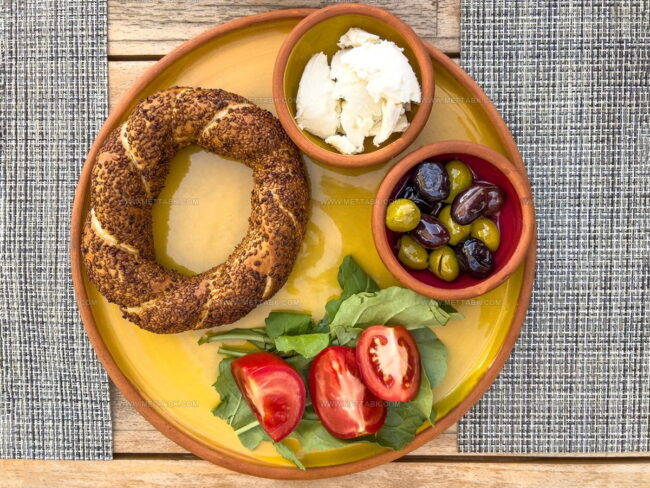
Clara Bennett
Contributing Recipe Developer & Food Writer
Expertise
Baking and Pastry Development, Gluten-Free and Allergy-Friendly Recipe Creation, Culinary Storytelling and Food Journalism, Recipe Testing and Standardization, Southern Comfort Foods and Modern Twists
Education
Sullivan University – National Center for Hospitality Studies
Associate Degree in Culinary Arts
Focus: Baking and Pastry Arts, Recipe Testing, and Culinary Journalism.
Clara specialized in crafting desserts that blend classic Southern comfort with modern techniques, while developing strong writing skills to tell the story behind every dish.
Lane Community College (Certificate Program)
Certificate in Food Writing and Photography
Focus: Culinary storytelling, recipe formatting, food styling, and visual presentation.
Clara’s love of baking started young, powered by homemade pies, biscuits, and stories passed around the family table.
After earning her degree at Sullivan University and a food writing certificate at Lane Community College, she turned her passion into a craft: sharing recipes that are simple, soulful, and always full of heart.
She’s big on bold flavors, flexible ideas, and creating sweets that fit any table (yes, even if you’re gluten-free). When she’s not baking, you’ll find her wandering farmers’ markets, styling food for the next photo shoot, or working on her ever-growing recipe journal.